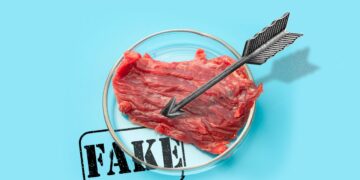[ad_1]

The success of wine auctions within the final 12 months or two haven’t solely made some huge cash for the auctioneers and a few sellers, however gone some technique to establishing a secondary market that guarantees to complicate the shopping for and promoting of finer South African wines. It has revealed a willingness to simply accept the worth (sensual and thence financial) of ageing critical wine. For these of a speculative flip, it’ll imply extra of the perfect ageworthy wines being laid down for later, worthwhile sale; for many who wish to drink extra advanced and subtly thrilling wines, it’ll be an encouragement to put them down (in the correct cool and quiet circumstances, hopefully) for later consuming. Each classes of purchaser can be ready for the magic to occur. Hoping that it’s going to occur. And lots of of them wanting early recommendation.
Widespread curiosity within the ageability of fine Cape wine is obvious. In my column final week, I lamented the relative lack of detailed commentary about this subject amongst the native dishers-out of scores, and talked about the five-star scoring system utilized by Michael Broadbent, wherein stars got for the drinking-value of the wine on the time of tasting, and maybe extra stars got in brackets to point its anticipated final worth.
The difficulty is, and why that will typically be tough to do with any confidence for native wines, is that the required expertise, and therefore the mandatory connoisseurship, is missing – exactly as a result of many of the prime wines are too new (invented, because it had been, throughout the final decade or two) to permit for expertise to have constructed up about how a wine of a selected sort or origin goes to be in 10, 20, 30 years. Okay, we will know that cabernet sauvignon from Paarl or Stellenbosch is able to ageing for 50 years even – however there’s inadequate continuity from the Sixties, when GS Cabernet was made (and we will’t even be certain of the circumstances of its manufacturing) to make for detailed usefulness. Wines like Hamilton Russell Pinot Noir have been round for 40 years – however even the pinot clones used for it have modified in that point. By the way, frankly, going by my restricted expertise, I believe that some public sale costs for sure Cape wines of wines from the Nineteen Eighties and Nineteen Nineties have been over-enthusiastic, and too excessive for the probability of the wines delivering nice satisfaction.
In all probability the Kanonkop wines are essentially the most understood of the highest post-1980 wines – which is the explanation they do notably nicely on public sale (it ought to be the explanation, relatively than a critic giving a whopping rating to an toddler model!). And we’re beginning to study – after 10 or extra vintages of a great variety of wines, and thru vertical tastings of Sadie Columella, Mullineux Syrah, and many others – about a number of the youthful stars of the rising secondary market. Basically, and for instance, that’s, we will anticipate a Columella that’s 5, 10, or 15 years previous to have gained, and to nonetheless have life and improvement potential. And simply this 12 months I’ve come to essentially settle for that there are actually many white wines, even aside from chardonnays (just like the splendidly ageworthy De Wetshof Bateleur), which, at ten or so years previous, are consuming extraordinarily nicely and will accomplish that for a bit longer. I mentioned Steenberg sauvignon not too long ago on this context; and I’ve additionally been tremendously impressed by, amongst others, decade-plus Badenhorst, Alheit and Mullineux chenin-based whites, Boekenhoutskloof Semillon, Sadie Ouwingerdreeks whites, and many others. Winemag’s Ten Year tastings are vital right here.
However I don’t suppose we have now even developed a sufficiently deep understanding of the consequences of various sorts of harvest circumstances on ageability, not to mention the interplay with terroir. Particularly given the most important enhancements in viticulture this century.
Michael Broadbent was largely working with a reasonably restricted vary of wines (particularly Bordeaux, Burgundy, Port, some Germans, maybe Barolo, and many others), of which, as a wine auctioneer, he may develop his splendid expertise. It’s nonetheless largely these wines, with some aspirant additions (Napa cabernet, Tuscans, just a few particular Australians, and many others) which can be on the peak of the worldwide secondary market; as a result of connoisseurs have had the possibility to find out about them. (However keep in mind the uncertainties caused by the Parker revolution’s impact on Bordeaux, specifically.)
The true drawback is that we frequently can’t be fully positive what components in a wine (one and not using a historical past) are going to assist or hinder its ageworthiness. The grape selection is clearly necessary, as appears to be a common stability; pH is important by many accounts, and whole acidity; the usage of sulphur; tannins in purple wines…. And what in regards to the position of maturation vessels? The wines from clay pots that I really like a lot – will they mature in addition to these from oak? Of two good wines from the identical winery, will Sons of Sugarland Syrah, introduced up in concrete, age in bottle in addition to partly new-oaked Van Loggerenberg Graft? We don’t know. We are able to guess, and every year we will make more and more good guesses – however typically I’d be very cautious of anybody who dares to present greater than generalisations about ageworthiness of wines with out intelligently adducing a observe document. (After all, I’d be much more cautious of people that assign scores to wines in blind tastings, with inevitably no consciousness of observe document in any respect – however let’s not go there now!)
Right here’s a related account of one thing which illustrates one thing about this. And about my very own ignorance, after all, however my level is that we’re nonetheless at a stage in understanding Cape wine the place ignorance is widespread, even amongst those that are extra extensively and deeply skilled than the generality of drinkers. In my Winemag report in March on a Cape Vintners Classification tasting, I discussed {that a} 2014 DeMorgenzon Chardonnay Reserve was notably over the hill. Tonight, at my facet, I’ve a glassful of the 2015 – a 12 months youthful, sure, and of a famend classic, however of an excellence and youthful vitality as to make me fairly sure that the fault of that 2014 was a person bottle certainly one of random untimely oxidation (presumably because of a defective cork).
I seldom get an opportunity to style older vintages of wines like this – what number of do? However till extra critics and commentators develop an understanding of how particular Cape wines age, and till extra Cape wines attain a critical maturity, we should be modest in our claims about ageability. Sadly. However at the very least it’s a marvellous and interesting studying expertise, build up this database for the long run.
- Tim James is certainly one of South Africa’s main wine commentators, contributing to varied native and worldwide wine publications. He’s a taster (and affiliate editor) for Platter’s. His guide Wines of South Africa – Custom and Revolution appeared in 2013
Assist us out. In case you’d like to indicate slightly love for unbiased media, we’d tremendously admire it. To make a monetary contribution, click on here. Bill out there upon request – contact information@winemag.co.za
[ad_2]
Source link







